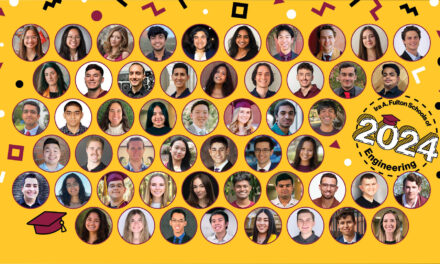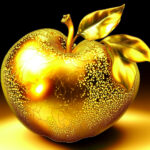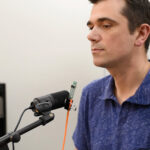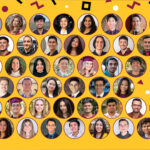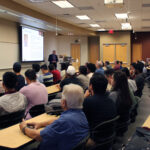
Essential reading: Faculty, staff offer book list
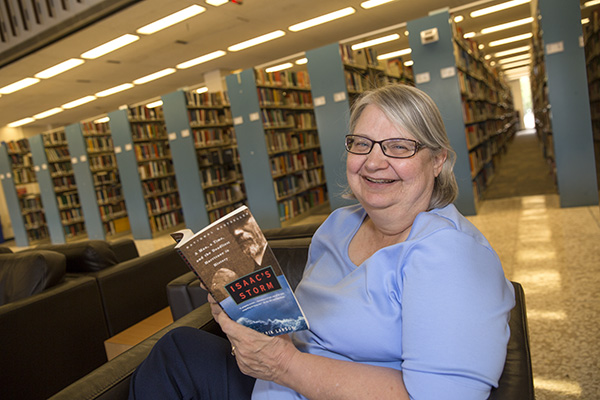
Arizona State University engineering librarian Linda Shackle can help you locate books recommended here by faculty and staff members in the Ira A. Fulton Schools of Engineering. E-mail [email protected]
Aspiring engineers are not educated and primed for success solely by knowledge gained through textbooks, lectures and lab projects. Venturing beyond the academic milieu to seek insights into areas both related to and distant from the world of engineering can provide valuable lessons. Here, 10 faculty and staff members in the Ira A. Fulton Schools of Engineering recommend books that can take you on journeys of discovery to expand your education — or maybe just keep you intellectually engaged or simply entertained on breaks between semesters.
For more reading recommendations see previous years’ editions of this feature: Essential reading 2014, Essential reading 2013, and Essential reading 2012
“Salt: A World History” by Mark Kurlansky
 Recommended by Oswald Chong, associate professor, School of Sustainable Engineering and the Built Environment
Recommended by Oswald Chong, associate professor, School of Sustainable Engineering and the Built Environment
This is a fascinating book that every engineer should read. If you look back in human history, you will find salt is one of the rare materials that changed our world in many ways. Like oil and sand, salt is one of Earth’s abundant materials and substances that in some times and places was seen as largely undesirable (because it caused rust) and at other times and places became extremely valuable (as food). It makes you wonder: Are there other materials we think of today as “undesirable” that will someday make some people rich and powerful?
“Set Phasers on Stun” by Steven Casey
 Recommended by Nancy Cooke, professor, The Polytechnic School
Recommended by Nancy Cooke, professor, The Polytechnic School
This book recounts 20 true stories of disasters (in some cases very gruesome) that result from the failure of technology to effectively connect to humans. Most of the disasters are not the result of a single point failure in the system or human interface, but multiple issues that often interact to result in unanticipated consequences. In one instance an individual receives more than 125 times the prescribed dose of radiation therapy due to a poor interface for delivering the doses, coupled with the fact that the screaming patient was in a different location from the technician and the video monitor in the patient’s room was not plugged in and the voice intercom between rooms was not working. Needless to say, the patient died a slow, agonizing death as a result. When you read these stories you can’t help but be bewildered by the poor design of technology and the lack of consideration of the human user. These true stories inspire me to help make systems that are useable, resilient and safe for humans.
“Ready for Takeoff!” by Dean C. Millar
Recommended by Robin Hammond, director, Fulton Schools of Engineering Career Center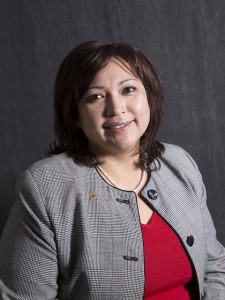
This book is written for engineering and technical students by professionals who give best-of-the-best career guidance on how to design a college experience that paves a pathway to a dream job, followed by practical advice to how to chart a great career trajectory. What differentiates this compact guide from other career advice materials is its expert guidance contextualized in engineering and technical fields. This how-to guide is suitable for students and new professionals at every level.
“For Your Improvement” published by Korn-Ferry
Recommended by Robin Hammond, director, Fulton Schools of Engineering Career Center
My first introduction to this guide was when I was sitting with a new engineering manager who was struggling to develop and grow his team of experienced professionals and new interns, while managing his own career. He credited this book for helping him overcome his most difficult workplace problem: people skills. This book is a highly regarded professional development reference of overused and underused skills and instruction on how to achieve optimal human growth. I have recommended it many times to students and professionals who lead, plan to lead, mentor, and are mentored, who are seeking to grow professionally, or who have succeeded and want to accelerate their careers. The book is a reference guide rather than a cover-to-cover read. The newer editions are a costly resource (although well worth the price), but I’ve found the earlier editions – which sell for anywhere from $6 to $20 – just as valuable.
“The Sixth Extinction: An Unnatural History” by Elizabeth Kolbert
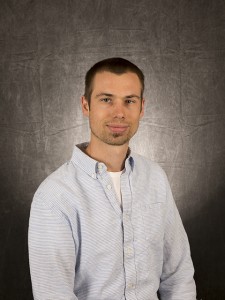 Recommended by Zachary Holman, assistant professor, School of Electrical, Computer and Energy Engineering
Recommended by Zachary Holman, assistant professor, School of Electrical, Computer and Energy Engineering
Two reasons to read “The Sixth Extinction”: (1) Elizabeth Kolbert is a genius, and (2) Elizabeth Kolbert is a genius. Kolbert tells perhaps the most important story of our era – that of the sixth mass extinction in recorded history, this time thanks to the global success of humankind – through 13 episodic chapters that take us from mastodon teeth to coral polyps. Kolbert is first a genius as a storyteller: She brings data to life and weaves it into a compelling tale that should make engineers and politicians alike marvel at our world and strive to save it. She is also a genius as a science writer. We should all strive to emulate her accuracy, clarity and creativity.
“Alice, Let’s Eat: Further Adventures of a Happy Eater” by Calvin Trillin
Recommended by Zachary Holman, assistant professor, School of Electrical, Computer and Energy Engineering
When you have had enough of homework and are ready for something both fun and funny, pick up this Calvin Trillin book. I challenge you not to enjoy yourself (and drool a bit) as you follow Calvin on his adventures in search of something decent to eat. Have you heard of anyone else boarding a short flight with a “picnic” of caviar, smoked salmon, crudités with pesto sauce, tomato-curry soup, butterfish, spiced clams, lime and dill shrimp, tomatoes stuffed with guacamole, mussels, pâté, veal, a bottle of wine from Burgundy, chocolate cake, and praline cheesecake? (Don’t worry – he loves barbecue, too.)
“The Idea Factory” by Jon Gertner
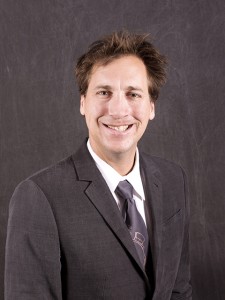 Recommended by Owen Hildreth, assistant professor, School for Engineering of Matter, Transport and Energy
Recommended by Owen Hildreth, assistant professor, School for Engineering of Matter, Transport and Energy
For several decades of the 20th century, Bell Labs — a part of AT&T — was the premier research and development institution in the world. Merging engineering, applied sciences and fundamental science, Bell Lab’s leaders were responsible for many of the technologies that form the basis of the world today — transistors, satellites, lasers, digital and cellular communications, photovoltaics, and more. The lab operated in a unique way at a unique time in American history. In his book, Gertner chronicles the origins of the ideas that led to these important modern inventions and tells an inspiring story that shows how research impacts our society.
“The Lean Startup” by Eric Ries
 Recommended by Brent Sebold, lecturer and director, Startup Center
Recommended by Brent Sebold, lecturer and director, Startup Center
If you consider yourself to be an innovator, a scientist, or an engineer who aims to create something new under conditions of extreme uncertainty, this book will change your life and shape your future, as it did for me. Ries took a variety of convoluted innovation strategies that had bubbled up from the lean manufacturing movement, as well as from the post-dot com bubble burst, and turned them into pure poetry. Following in the footsteps of Steve Blank, the evidence-based entrepreneurship guru who was his professor, mentor and investor, Ries reinforced the argument that startup ventures are not smaller versions of large companies – a rebuttal to an axiom that had been offered to neophyte entrepreneurs within every business school and MBA program over the past century. With “The Lean Startup,” Ries sets himself apart from his predecessors by clearly defining startup founding teams as temporary organizations searching around in the dark for repeatable, scalable business models. As a result, this book sparked a methodological sea change within the messy realm of entrepreneurship and innovation. It offers a pragmatic tool chest to support the belief that entrepreneurs aren’t born, they’re made.
“The Hard Thing About Hard Things” by Ben Horowitz
Recommended by Brent Sebold, lecturer and director, Startup Center
Horowitz writes humorously about how some of today’s most respected engineers and entrepreneurs came of age in the Silicon Valley. Set to a hip-hop soundtrack, the book reinforces the fact that innovation — and subsequent societal or marketplace impact — is 1 percent inspiration and 99 percent perspiration. Now stop being a “wantrepreneur.” Read this book, roll up your sleeves, and get to work.
“Isaac’s Storm: A Man, a Time, and the Deadliest Hurricane in History” by Erik Larson
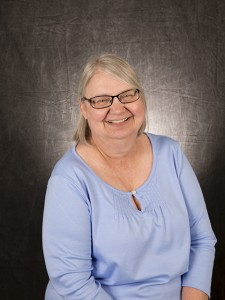 Recommended by Linda Shackle, librarian, Daniel E. Noble Science and Engineering Library
Recommended by Linda Shackle, librarian, Daniel E. Noble Science and Engineering Library
Hurricanes as a rule do not strike Texas and those that do are weak storms, stated Isaac Cline in an 1891 article in the Galveston Daily News. Cline was the director of the Texas section of the Weather Bureau and his office was in Galveston. Educated, dedicated to his job and having proved himself a sufficiently accurate forecaster, Cline was what the newly formed Weather Bureau needed as it struggled to achieve legitimacy. Strangely, Cline’s confident statement on the matter of hurricanes glossed over what had happened when two strong hurricanes had hit the Texas coast recently, one in September 1875 and another in August 1886. Cline considered these weak aberrations unlikely to happen again. Cline knew that hurricanes always moved up the Atlantic coast, they did not cross the Gulf of Mexico. On September 8, 1900, the hurricane that struck Galveston would shatter Cline’s statements the same way it would shatter the homes, businesses and, unfortunately, the lives of an estimated 6,000 residents and visitors. This cautionary tale presents the reader with many issues to consider: the mixing of politics with science, stifling bureaucracy, and mistakes made because of humanity’s foibles. Master storyteller Erik Larson effectively weaves the history of late 19th century weather forecasting with Cline’s life and work. The story races to an end you know is coming but compels you to finish. At the end, you have to ask the question that most likely haunted Isaac Cline for the rest of his life: Could more lives have been saved? As a librarian I would be remiss if I did not also mention author Larson’s use of primary source material from both the National Archives as well as local Texas collections. The first-person accounts give life to the historical facts, as noted by many reviewers. More importantly, Larson found evidence challenging some of the commonly held beliefs of what happened that day and the events leading up to it.
“Micromotives and Macrobehavior” by Thomas Schelling
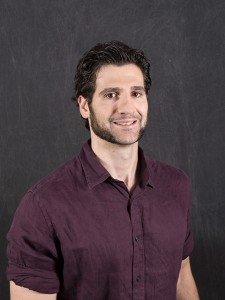 Recommended by Paulo Shakarian, assistant professor, School of Computing, Informatics, and Decision Systems Engineering
Recommended by Paulo Shakarian, assistant professor, School of Computing, Informatics, and Decision Systems Engineering
Have you ever stood in long line at a buffet only to find a much smaller line at the other end of the table? Ever slow down after suffering through a traffic jam just to take a quick glimpse of a car accident? In both cases, people as individuals make relatively small decisions (following the crowd to the longer line; slowing down to look at an accident) that, when performed as a population, lead to unintended outcomes (such as a cold dinner or a traffic jam). Through the sharp lens of economics, Nobel Laureate Thomas Schelling explores this phenomenon in his book, a timeless classic. He ambitiously studies a variety of cases that include everything from voluntary racial segregation to choosing the genes of one’s child, to deterring use of nuclear weapons. Despite being written in the late 1970s, Schelling’s masterpiece reads as if he was considering some of the most pressing issues we see in today’s headlines – and then works to explain the phenomena through the use of mathematical models. Any engineer looking to address societal problems should read this book. Nearly a decade after first reading it I still find myself reviewing chapters for inspiration.
“Haroun and the Sea of Stories” by Salman Rushdie
 Recommended by Barbara Smith, assistant professor, School of Biological and Health Systems Engineering
Recommended by Barbara Smith, assistant professor, School of Biological and Health Systems Engineering
Hold on tight as this book takes you soaring into the adventure of life in real-time. In this beautiful depiction of a young man’s journeys into the world, readers will grow along with the characters as they differentiate dream from reality, formulate who they are, and begin to pave their road ahead. In the end, this fantastical tale highlights that to grow and develop we must continue to redefine ourselves by exploring the unknown – stepping out of our comfort zones and into our own lives. Consider that a plan in the mind never looks the same as it does when it works out in reality. So start walking, and create the path that will become the life you live.
“Eating the Dinosaur” by Chuck Klosterman
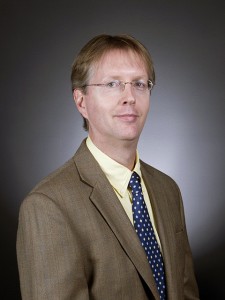 Recommended by Kyle Squires, professor and director, School for Engineering of Matter, Transport and Energy
Recommended by Kyle Squires, professor and director, School for Engineering of Matter, Transport and Energy
This book is a series of essays that veer off in unexpected directions and more often than not don’t make an obviously definitive point. One of the essays, for example, is titled “Going Nowhere and Getting There Never.” But what Klosterman gives you are unusual perspectives regardless of the topic. Whether writing about politics, rock music, sports or movies, he draws interesting connections between various subjects that you likely would never imagine. His observations, sometimes off the wall, can open your mind to “thinking outside the box.” In general, literature that makes you think of things you don’t normally consider and draw connections between people or issues that don’t seem at all connected is good practice for thinking creatively. That’s part of the essence of engineering — coming up with brand-new solutions to problems that often require connecting seemingly disparate topics and ideas. Practicing that type of activity is important, healthy and a valuable lesson for engineers.
Media Contact
Joe Kullman, [email protected]
480-965-8122
Ira A. Fulton Schools of Engineering






